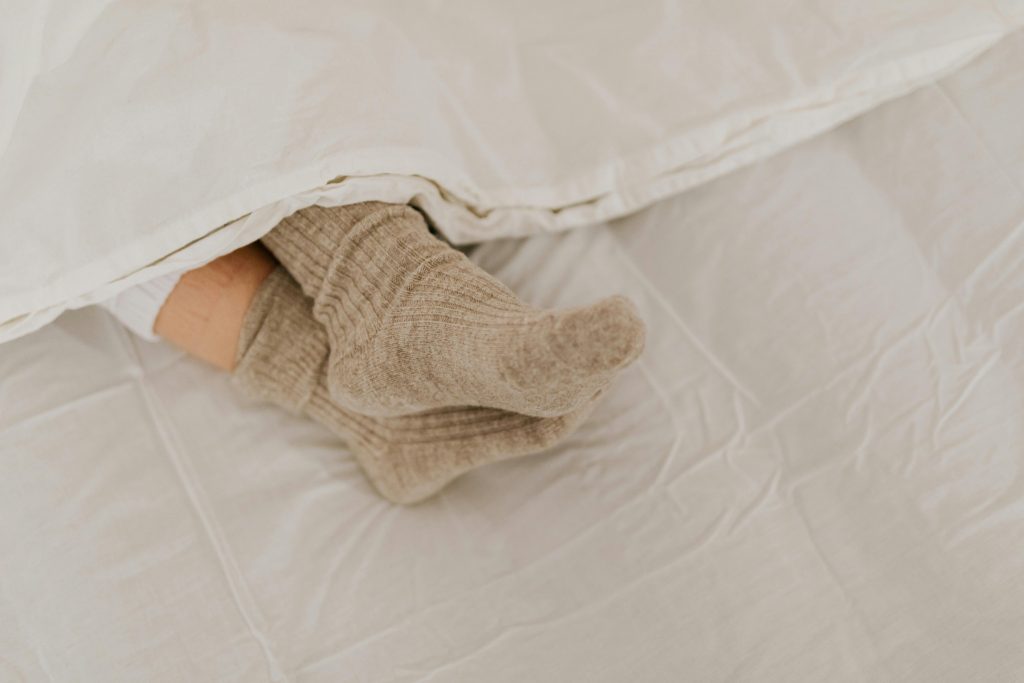Ever felt like your heating bill is plotting against you? Like the more you layer up, the more your energy costs climb as if they’ve got their own winter sports competition to win. Winter might bring cosy vibes and hot chocolates, but it’s also the season where your wallet—and the planet—takes a hit.
But here’s the thing—warming up doesn’t have to mean cooling down your bank account or leaving a hefty carbon footprint. With a few clever, sustainable tweaks, you can keep your home cosy, your bills low, and your environmental impact lighter than a snowflake.
From sealing up drafts to rethinking your energy use, these tips are as good for your wallet as they are for the planet. Ready to make winter a season of savings and sustainability? Let’s dive into some simple, actionable ideas that’ll help you stay warm and green this winter.

- Draught Dodgers: Did you know that draughts around windows and doors can be responsible for up to 30% of heat loss in your home? This means you could be spending a lot more on heating just to make up for that lost warmth. That’s where draught excluders come in. A draught excluder is usually a padded or weighted strip (often fabric-filled with material like foam or sand) that you place at the base of doors or windows. You can also find adhesive or flexible strips designed to seal gaps around doors and windows. Seal those gaps to keep heat in, reduce energy use, and lower your carbon footprint! For more info, check out Benefits of draught excluders | Wickes.
- Layer Up—Your Home Deserves Cosy Clothes, Too: Rugs, heavy curtains, and thermal liners aren’t just for aesthetics—they’re your secret weapons for trapping heat. Covering hard floors with rugs blocks cold from seeping through, while lined curtains help prevent warmth from escaping through windows. For budget-friendly options for rugs, curtains, and furniture, you can check out local charity shops in Kent, such as Pilgrims Hospices shops, which have over 30 locations across East Kent, including in Canterbury, Ashford, and Folkestone. They often stock furniture and home essentials at lower prices. You can find their locations on their website here: Find your local shop – Pilgrims Hospices. Also, don’t overlook DIY options either: layering old blankets under your rugs or sewing fabric onto existing curtains can work wonders on a budget!
- Use Zoned Heating (and Shut Doors): Zoned heating might sound like a fancy term, but it’s really just about heating specific areas of your home rather than the whole house. Essentially, it allows you to adjust the temperature in different rooms depending on what you’re using—so you can have a warm, toasty living room without heating the entire house. If you don’t have a zoned system, don’t worry! You can still get the benefits by manually adjusting your radiators. Turn the heat down or off in rooms you don’t need, like unused guest rooms or hallways, and close doors to trap heat where it matters most. It’s a simple trick that cuts down on wasted energy and lowers your bills while keeping you and your family cosy.
- DIY Warmth: The Terracotta Candle Trick: A popular trick for warming up a room without turning on the heating is using a terracotta plant pot. The idea is simple: place a lit candle underneath an upside-down terracotta plant pot, and the pot absorbs and slowly releases heat into the room. This method works because the terracotta material retains heat, acting as a kind of natural radiator. Be sure to use this method safely, keeping the candle in a stable, fireproof area. While it may not be a substitute for a full heating system, it’s a clever, inexpensive way to add some extra warmth in small spaces. For more details on this technique, you can check out this guide on: How to Build a Terra Cotta Pot Heater in 2 Different Ways.
- Unplug Energy Vampires: Even in winter, there’s no need to let energy vampires—devices that consume power when they’re plugged in but not in use—drain your wallet. While modern gadgets like TVs use less standby power, others still suck up significant energy when plugged in. Common culprits include things like phone chargers, kitchen appliances (like coffee makers and microwaves), game consoles, and computers. For example, a fully charged phone still uses electricity if left plugged in overnight, and a microwave uses power even when it’s just sitting there waiting for you to use it. To save energy, unplug these devices when you’re not using them, or use a power strip with an on/off switch. This way, you can cut power to multiple devices with one click. Small savings here and there add up over time, and it’s better for your wallet—and the planet, too.
- Switch to LED Lighting: Winter means shorter days and longer nights, which often translates to more time with the lights on. Swapping your traditional bulbs for energy-efficient LED lights can save you a surprising amount on your electricity bills. LEDs use about 75% less energy than incandescent bulbs and last up to 25 times longer. Plus, they come in warm tones that make your home feel extra snug during those dark evenings. It’s a small change with a big impact—for both your wallet and the environment.
- Close Chimneys When Not in Use: An unused chimney can act like a vacuum, drawing warm air out of your home and pulling cold air in. This can significantly increase your heating costs. Always ensure the flue of the chimney is closed when your fireplace isn’t in use to keep the warm air where it belongs—inside your home. For an added layer of insulation, consider investing in a chimney balloon. These inflatable devices are placed inside the chimney to block draughts while still allowing proper ventilation. They’re reusable, affordable, and easy to install.
- Insulate Pipes: Exposed pipes, especially those in unheated areas like basements, garages, or lofts, lose heat rapidly. This not only wastes energy but also increases the risk of frozen pipes during extremely cold weather. Pipe insulation is an inexpensive and straightforward solution. Foam insulation sleeves can be purchased at most hardware stores and are easy to cut and fit around your pipes. Insulated pipes retain heat longer, meaning your water heater doesn’t have to work as hard.
- Upgrade to a Programmable Thermostat: A programmable thermostat is a simple but impactful way to manage your home’s heating. It allows you to set specific temperatures for different times of the day, ensuring you’re not wasting energy when no one is home or while you’re sleeping. Studies have shown that reducing your thermostat by just 1°C can save up to 10% on your energy bill. If a full programmable thermostat is out of budget, try using a simple plug-in timer for your heater or a smart plug for electric heaters. These allow you to schedule when your heating comes on and off, reducing waste and saving energy. They’re affordable and easy to set up, making them a great alternative to more expensive options.
- Warm Your Feet, Warm Your Body: You may not realise it, but your feet are one of the first places cold can affect. Keeping your feet warm is one of the quickest ways to feel warmer overall. Start with a thin moisture-wicking base layer, add an insulating wool layer, and finish with waterproof outer shoes. You might also want to try heated insoles or foot warmers, which are particularly handy during colder days. Proper footwear is essential—opt for insulated and waterproof shoes to block out the chill. There’s real science behind this—when your extremities stay warm, your blood circulation improves, helping your body retain heat. For more tips and information on keeping your feet warm this winter, check out these articles: How do I keep my feet warm during Winter? – Highett Podiatry and How to keep your feet warm this winter: 7 tips to keep cold away | Woman & Home

Winter doesn’t have to mean choosing between staying warm and saving money—or the planet. With these tips, you can keep your home snug, your energy bills manageable, and your carbon footprint as comforting as your favourite mug of winter hot cocoa. From embracing the magic of draught excluders and rugs to getting creative with sustainable DIYs, every little action adds up to a big difference.
Remember, sustainability isn’t about being perfect; it’s about being mindful and making smarter choices where you can. So, whether you’re insulating your pipes, rocking thermal curtains, or just layering up in your cosiest sweater, you’re not just warming your home—you’re contributing to a healthier planet for future winters to come.
Now, grab a blanket, pour yourself a cup of tea, and take a moment to appreciate your eco-friendly efforts. Winter might still be cold, but at least your heart (and your savings account) will feel a little warmer.
Stay cosy, save smart, and keep doing your part—because every step toward sustainability counts.
By Amitheesha Ganesh, SGO Projects Officer
 Sustainability
Sustainability Bethany Climpson
Bethany Climpson 677
677


